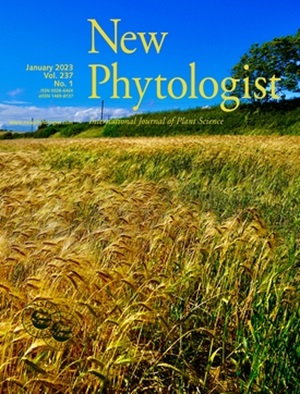Long‐term trends in global flowering phenology
IF 8.3
1区 生物学
Q1 PLANT SCIENCES
引用次数: 0
Abstract
Summary摘要 开花物候是气候变化对自然系统影响的一个指标。人类活动引起的气候变化已经持续了两个多世纪,但与之相比,生态学研究的时间却很短。在此,我们利用标本馆标本的大规模数字化来研究全球范围内开花物候的时间趋势。我们训练了一个卷积神经网络模型来对被子植物标本馆标本的图像进行开花与否的分类。该模型用于推断跨越一个世纪和全球尺度的 800 万件标本的开花情况。我们研究了生态区内平均开花日期和花期持续时间的时间趋势。我们发现,各生态区开花季节性的时间趋势具有高度多样性,花期的绝对偏移中位数为每十年 2.5 d,花期持续时间的绝对偏移中位数为每十年 1.4 d。低纬度地区物候时间趋势的变异性高于高纬度地区。我们的研究证明了数字化标本馆标本在了解变化时期自然动态方面的价值。低纬度地区物候趋势的变异性较高,这可能反映了温度和降水季节性变化的综合影响,以及光周期对开花的限制较低。
本文章由计算机程序翻译,如有差异,请以英文原文为准。
求助全文
约1分钟内获得全文
求助全文
来源期刊

New Phytologist
生物-植物科学
自引率
5.30%
发文量
728
期刊介绍:
New Phytologist is an international electronic journal published 24 times a year. It is owned by the New Phytologist Foundation, a non-profit-making charitable organization dedicated to promoting plant science. The journal publishes excellent, novel, rigorous, and timely research and scholarship in plant science and its applications. The articles cover topics in five sections: Physiology & Development, Environment, Interaction, Evolution, and Transformative Plant Biotechnology. These sections encompass intracellular processes, global environmental change, and encourage cross-disciplinary approaches. The journal recognizes the use of techniques from molecular and cell biology, functional genomics, modeling, and system-based approaches in plant science. Abstracting and Indexing Information for New Phytologist includes Academic Search, AgBiotech News & Information, Agroforestry Abstracts, Biochemistry & Biophysics Citation Index, Botanical Pesticides, CAB Abstracts®, Environment Index, Global Health, and Plant Breeding Abstracts, and others.
 求助内容:
求助内容: 应助结果提醒方式:
应助结果提醒方式:


